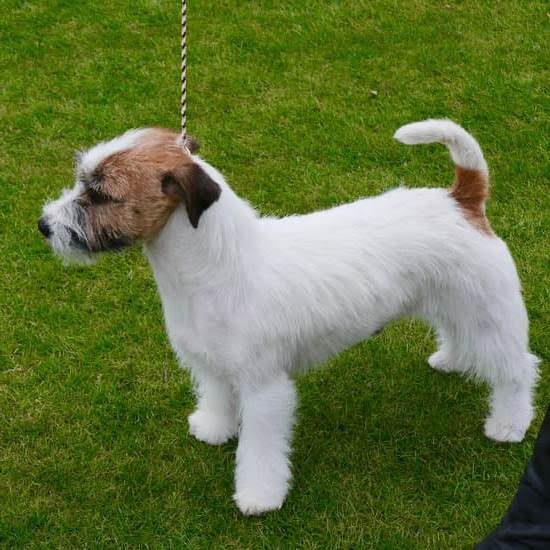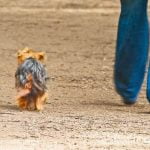Training a human remains detection dog is a meticulous process that requires dedication, patience, and expertise. These highly specialized canines play a crucial role in various fields, including search and rescue operations, forensic investigations, and law enforcement efforts.
Human remains detection dogs are trained to locate and alert their handlers to the presence of human remains by detecting specific scents associated with decomposition. They are invaluable assets in locating missing persons, identifying crime scenes, and providing closure to families of the deceased.
In this article, we will delve into the comprehensive training methods required to hone the skills of human remains detection dogs. From selecting the appropriate breed for this task to advanced training techniques and real-life scenarios, understanding the intricacies of preparing these canine specialists is essential for their success in the field. Let’s explore the fundamental aspects of training these remarkable animals for such critical work.
Selecting the Right Breed for Human Remains Detection Training
Human remains detection dogs, also known as cadaver dogs, play a crucial role in search and rescue operations, forensic investigations, and disaster response efforts. These highly specialized canines are trained to locate the scent of decomposing human tissue even in challenging environments. One key aspect in successfully training a human remains detection dog is selecting the right breed suitable for this specific task.
When choosing a breed for human remains detection training, it is essential to consider characteristics such as olfactory capabilities, drive, work ethic, and physical stamina. While any dog with the right temperament and qualities can be trained for this task, some breeds are naturally more predisposed to excel in scent detection work. Common breeds used for human remains detection include German Shepherds, Belgian Malinois, Labrador Retrievers, and Border Collies.
To effectively train a human remains detection dog regardless of breed, it is crucial to start with foundational obedience training before proceeding to specialized scent work. Building a strong communication bond between the handler and the dog is essential in establishing trust and reliability during search missions. Positive reinforcement techniques involving rewards like treats or toys are often employed to encourage desired behaviors during training sessions.
- Consider olfactory capabilities and work ethic of breeds
- Start with foundational obedience training before specialized scent work
- Establish strong communication bond between handler and dog by using positive reinforcement techniques
By carefully selecting the right breed suited for human remains detection training and following proper training techniques, handlers can set their canine partners up for success in fulfilling their vital roles in search and rescue operations.
Basic Training Techniques for Human Remains Detection Dogs
Training a human remains detection dog requires a strategic approach to develop their innate abilities to locate deceased remains. One of the fundamental aspects of training involves imprinting the specific scent associated with decomposing human tissue on the dog’s olfactory memory.
This process, known as scent discrimination training, is crucial for teaching the dog to differentiate between various scents and focus on identifying human remains accurately. Handlers must use scent samples and gradually increase the complexity of scenarios to challenge the dog’s detection skills.
Positive reinforcement is another key element in basic training for human remains detection dogs. Rewarding the dog with treats, toys, or verbal praise when they successfully locate a target scent reinforces their behavior and motivates them to continue searching effectively.
Consistent and clear communication between the handler and the dog is essential during training sessions to establish trust and strengthen their working relationship. By creating a positive association with detecting human remains, handlers can ensure that their canine partners remain enthusiastic and focused on their tasks.
Additionally, obedience training plays a vital role in preparing human remains detection dogs for the challenges they may encounter in real-life search operations. Teaching basic commands such as sit, stay, come, and heel helps improve the dog’s responsiveness and discipline in various environments.
These commands not only enhance communication between the handler and the dog but also ensure safety during search missions. Overall, by implementing these basic training techniques effectively, handlers can lay a strong foundation for developing proficient human remains detection dogs ready to assist in crucial search and recovery efforts.
Advanced Training Methods for Sharpening Detection Skills
Training a human remains detection dog goes beyond just basic commands. Once the foundational training is in place, it is crucial to incorporate advanced methods to sharpen the dog’s detection skills. These methods focus on enhancing the dog’s ability to identify and locate human remains more effectively and efficiently. Here are some key techniques for advanced training:
1. Scent discrimination: One of the essential skills for a human remains detection dog is being able to discriminate between different scents. Advanced training involves teaching the dog to differentiate specific scents related to human decomposition from other distracting odors. This can be achieved through scent discrimination exercises using various scent samples in controlled environments.
2. Search patterns: To maximize efficiency in detecting human remains, dogs need to learn effective search patterns. Advanced training includes teaching dogs how to cover an area systematically and thoroughly, ensuring no areas are overlooked during a search operation. Various search patterns such as grid searches, spiral searches, or sector searches can be practiced during training sessions.
3. Increasing duration and complexity: As dogs progress in their training, it is important to gradually increase the duration and complexity of search tasks. This could involve extending the length of search missions, introducing challenging environments with distractions, or incorporating hidden or buried scent sources for the dog to locate. By continually pushing the limits of their detection abilities, dogs can further hone their skills in detecting human remains.
By implementing these advanced training methods, handlers can enhance their human remains detection dog’s proficiency and reliability in real-life scenarios. Consistent practice, positive reinforcement, and ongoing evaluation are key components in refining a detection dog’s skills over time. Remember that patience and dedication are essential when training a human remains detection dog to ensure they perform optimally when called upon for search operations.
Utilizing Scent Detection Equipment in Training
Human remains detection dogs rely heavily on their sense of smell to locate and alert to the presence of human remains. To enhance and refine this innate ability, training programs often incorporate the use of scent detection equipment.
One common tool used in training is a scent wheel, which consists of multiple containers with different scents, including human remains. By familiarizing the dog with these scents in a controlled environment, trainers can help them recognize and differentiate the target odor during real search operations.
In addition to scent wheels, some training programs utilize scent boxes or tubes that release specific odors when opened by the dog. This helps in teaching the dog to associate the target odor with a positive response, such as indicating through barking, sitting, or digging.
The controlled release of scents helps build the dog’s confidence and reinforces their detection capabilities. Trainers also use wind tunnels to simulate outdoor conditions and teach dogs how air currents can carry scents over distances, guiding them towards the source.
| Scent Detection Equipment | Training Benefits |
|---|---|
| Scent Wheels | Help dogs recognize and differentiate target odors |
| Scent Boxes/Tubes | Teach dogs to associate target odor with positive response |
| Wind Tunnels | Simulate outdoor conditions and guide dogs towards source odors |
Real-Life Scenarios and Simulation Training for Human Remains Detection
Understanding the Importance of Real-Life Scenario Training
Training human remains detection dogs involves exposing them to various real-life scenarios that they may encounter in the field. These simulations are crucial in helping the dogs acclimate to different environments and conditions where they may be called upon to search for human remains. By incorporating real-life scenarios into training, handlers can assess the dog’s reactions, fine-tune their skills, and enhance their overall performance.
Implementing Simulation Exercises
Simulations can range from searching in rugged terrain, dense forests, or urban settings to simulating disaster scenarios like collapsed buildings or mass casualty incidents. These exercises not only provide practical experience but also help prepare both the dog and handler for unexpected challenges they may face during actual search operations. By introducing distractions, obstacles, and varying levels of difficulty in simulation exercises, trainers can gauge the dog’s response and address any weaknesses in their detection abilities effectively.
Refining Skills Through Mock Searches
One effective method of real-life scenario training is conducting mock searches where human remains are strategically placed for the dog to find. Handlers can observe the dog’s behavior closely, analyze their alert signals, and provide immediate feedback to reinforce positive detection behavior.
These simulated searches help improve the dog’s accuracy, endurance, and problem-solving skills while reinforcing their drive to locate human remains efficiently. By regularly incorporating mock searches into training sessions, handlers can fine-tune the team’s performance and build confidence in both the dog and themselves.
By consistently exposing human remains detection dogs to real-life scenarios and simulation training exercises, handlers can ensure that these specialized canines are well-prepared for any situation they may encounter during search and rescue operations. The ability to navigate diverse environments, locate hidden human remains with precision, and remain focused under challenging conditions are critical skills that can be honed through structured simulations.
Through dedicated training efforts that replicate actual search scenarios as closely as possible, human remains detection dogs can fulfill their vital roles in assisting authorities in locating missing persons or victims of disasters.
Maintaining Physical Fitness and Health of Detection Dogs
Proper Exercise and Nutrition
Maintaining the physical fitness and health of human remains detection dogs is crucial in ensuring they perform at their best when called upon for search and rescue operations. Just like any athlete, these working canines require regular exercise to keep them in top shape. This includes daily walks, runs, and playtime to keep their muscles strong and their energy levels high.
Additionally, a balanced diet tailored to their specific nutritional needs is essential for sustaining their endurance and overall well-being. Consulting with a veterinarian to develop a customized nutrition plan can be beneficial in promoting longevity and peak performance.
Regular Veterinary Check-Ups
In order to catch any health issues early on, it is important to schedule regular veterinary check-ups for human remains detection dogs. These check-ups not only ensure that the dogs are up-to-date on vaccinations but also allow for early detection of any potential health concerns such as joint problems or allergies.
Preventative care, including dental cleanings and parasite control, is also key in maintaining the overall health of these specialized canines. Detecting and addressing any health issues promptly can prevent them from impacting the dog’s ability to effectively carry out their duties.
Mental Stimulation and Emotional Well-Being
In addition to physical fitness, mental stimulation plays a significant role in maintaining the well-being of human remains detection dogs. Engaging these intelligent animals in activities that challenge their minds, such as puzzle toys or scent games, helps prevent boredom and behavioral issues. Furthermore, creating a supportive environment that nurtures the emotional well-being of these working dogs is essential.
Providing opportunities for socialization with other animals and humans, as well as positive reinforcement training techniques, promotes a strong bond between handler and dog while fostering trust and confidence in their abilities. It is crucial to prioritize both the physical and mental health of human remains detection dogs to ensure they remain effective assets in search and rescue operations.
Certification and Accreditation for Human Remains Detection Dogs
Certification and accreditation are essential for human remains detection dogs to ensure that they are reliable and effective in their role. Proper training is crucial to prepare these dogs for the challenging tasks they will face in detecting human remains. Certification programs typically involve testing the dog’s skills in various scenarios, including locating buried remains, identifying decomposition odors, and differentiating between human and animal scents.
One key aspect of certification is ensuring that the handler knows how to effectively work with the dog during search operations. Handlers must understand how to interpret their dog’s behavior and signals to accurately locate human remains. Additionally, handlers need to be knowledgeable about proper search techniques, safety protocols, and legal considerations when working on a search site.
Accreditation for human remains detection dogs may also involve ongoing training and assessments to ensure that both the dog and handler maintain their skills at a high level. This may include participation in regular training exercises, workshops, or seminars focused on specific aspects of detection work.
By staying current on best practices and learning new techniques, teams can continue to improve their effectiveness in locating human remains. Ultimately, certification and accreditation play a crucial role in upholding standards of excellence in the field of human remains detection, ensuring that trained teams can confidently assist in search and recovery operations with precision and reliability.
Case Studies of Successful Human Remains Detection Dog Teams
Human remains detection dogs play a crucial role in search and rescue operations, forensic investigations, and disaster response efforts. These highly trained canines have the remarkable ability to locate human remains even in challenging environments. To understand how these dog teams operate effectively, it is essential to look at some case studies of successful deployments.
In one notable case, a human remains detection dog team was called upon to assist in a missing person search in a dense forest area. Despite rugged terrain and thick vegetation, the dog quickly located the scent of the missing individual, leading search and rescue teams to their location. This successful outcome demonstrated the precision and efficiency of a well-trained human remains detection dog.
Another case study involves a cadaver dog team that was deployed to assist law enforcement in a homicide investigation. The dog was able to detect traces of human remains in an area that had been thoroughly searched by officers but yielded no physical evidence. Thanks to the canine’s keen sense of smell and specialized training, critical evidence was discovered, ultimately leading to the resolution of the case.
These case studies highlight the invaluable contribution of human remains detection dog teams in various contexts. Their exceptional skills and dedication underscore the importance of proper training and ongoing practice for both dogs and handlers. Understanding how to train a human remains detection dog is essential for ensuring their effectiveness in real-life scenarios.
| Successful Case Studies | Lessons Learned |
|---|---|
| Dog located missing person in dense forest | Efficiency of well-trained dog teams |
| Detection of human remains in homicide investigation | Value of canine’s sense of smell in investigations |
Conclusion
In conclusion, the training of human remains detection dogs is a critical and specialized field that requires careful consideration and dedication. From selecting the right breed to advanced training methods, the process involves a combination of science, skill, and practical experience. Understanding the role these dogs play in locating human remains is crucial for their effectiveness in real-life scenarios.
One of the key takeaways from this comprehensive guide on how to train a human remains detection dog is the emphasis on continuous learning and improvement. Training never stops for these canine professionals as they must constantly sharpen their skills through simulation exercises and exposure to various scent detection equipment. Maintaining their physical fitness and health is just as vital, ensuring they are always ready to perform their duties efficiently.
Ultimately, proper training not only ensures the success of human remains detection dog teams but also contributes significantly to their overall credibility and reliability in search and rescue operations. By following the best practices outlined in this guide, handlers can enhance the capabilities of their canine partners and increase the chances of successful outcomes during critical missions.
The bond between these specially trained dogs and their handlers is truly remarkable, serving as a testament to the power of teamwork in achieving remarkable results in challenging situations.
Frequently Asked Questions
How Do You Train a Dog to Find Human Remains?
Training a dog to find human remains involves using positive reinforcement techniques to associate the scent of decomposing flesh with a reward. Initially, dogs are introduced to the scent in a controlled environment before progressing to more challenging scenarios.
How Do You Train a Detection Dog?
Training a detection dog involves utilizing their natural ability to detect scents and pairing it with obedience training. Dogs learn to recognize specific scents through repetitive exercises and are rewarded for correctly identifying the target odor.
What Kind of Dog Detects Human Remains?
The kind of dog that detects human remains is usually a specialized breed such as German Shepherds, Labrador Retrievers, or Belgian Malinois. These breeds are chosen for their strong sense of smell, intelligence, and trainability, making them ideal for search and rescue operations involving human remains.

Welcome to the blog! I am a professional dog trainer and have been working with dogs for many years. In this blog, I will be discussing various topics related to dog training, including tips, tricks, and advice. I hope you find this information helpful and informative. Thanks for reading!





